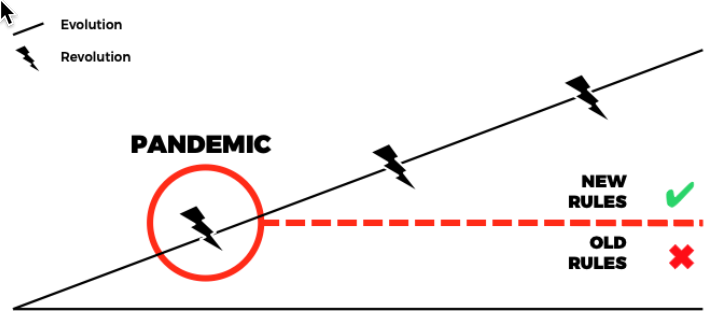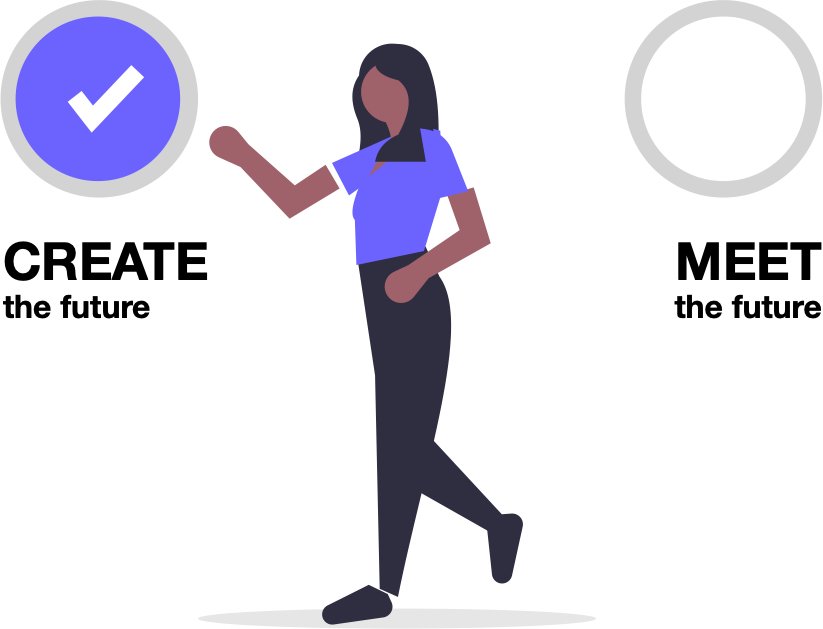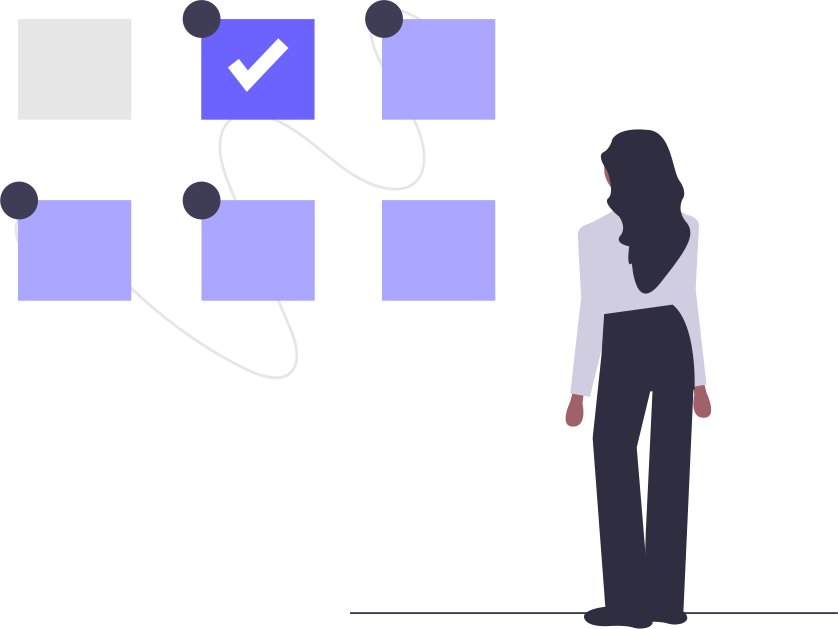LEGACY LEADERSHIP IS DEAD
welcome to the economic reboot and post covid-19 realities
Nader Sabry is a strategist, innovator, and entrepreneur in NASA space tech, government, and health/wellness. Has raised $20m directly /+$100m indirectly for startups and is a bestselling author of “Ready Set growth Hack: A beginners guide to growth hacking success” which is a growth blueprint for organizations to achieve 10x growth.
A new world is emerging, yet old ways continue. From leadership, mindset to systems. Right now, the struggle isn’t an unprecedented situation, but instead not having the right tools, leadership, and thinking to tackle today’s problems.
The pandemic has presented problems never encountered before and challenges that will redefine our futures. Legacy leadership is the most significant barrier to our future. It doesn’t allow for new ways to solve the existing problems we face in the context of our future.
Why are we in trouble?
Legacy leadership is based on old ideas and tools, even if masked as new ones. This fundamental change in thinking is ultimately what will determine two significant outcomes about the future.
1. WILL YOU BE CREATING THE FUTURE? — Creating the future is about defining, developing, and leading. This is about having the courage to carve out a situation where nothing may exist at the time but can be designed and shaped into a new situation.
This brings into light two primary strategic directions
- I will CREATE and get CONTRIBUTORS
- I will completely CREATE MY OWN
2. WILL YOU BE MEETING THE FUTURE? — Meeting the future is about identifying, adapting, and responding to change This is about detecting changes that have a direct and indirect impact and being able to adjust quickly to prosper from that change
This brings into light two primary strategic directions
- Let OTHERS create, and I will follow
- Let others create and will CONTRIBUTE
Neither is right or wrong, it’s merely a choice, but that choice cannot be made with legacy thinking. The past doesn’t help predict the future. Normally, that would have been the case as data tendencies would help us find patterns we can rely on.
Where are those patterns now? Well gone, mostly very little can be drawn on, so we now have those two choices I mentioned above. That requires a clear mind, no heavy history to carry forward, clarity, a willingness to start over, and an ability to recognize and/or adopt new rules.
We are in a revolutionary cycle where new rules are being defined as we speak; this is why this is painful. A revolutionary cycle is at the end of an evolutionary cycle where massive changes occur, changing the rules that govern the way economics, politics, and society at large function.
Whereas evolutionary cycles are a subset of a revolutionary cycle where a sequence of events are connected and accumulating over time. The connection is usually not seen immediately but, over time, shows how poor decision-making relate, but they are only incremental in change even if decades pass.

A revolutionary cycle is painful because it depends on who has the power or the insights or even the willpower to define those new rules. But to start, you have to recognize that we are in a revolutionary cycle, and you cannot do that unless you do not have legacy leadership. Leaders come in at different times and in different eras of growth, and in today’s world, you need leaders that create or meet the future. So let’s get down to what that means. Again neither is right or wrong, and you can start with one and shift to the other. The reality is 99% will meet the future, and 1% will create the future.
Why, the willingness. To think and work on a clean slate I. Times when everyone is hanging on. To everything they got since they are worried they may lose everything that has a world so hard to obtain makes it super hard to overcome.
- Are you willing to start over again?
- Are you willing to leave everything?
- Are you willing to accept new realities regardless of what they are?
- Are you willing to restart over again until you start?
These questions help define what mindset we have? If you answered yes to all, you are more likely to create the future. If you answered no to one or more not to worry, you know where you stand, which is about meeting the future.
 Are we stuck in recovery
Are we stuck in recovery
We are stuck because we have been conditioned with this idea relating to a single keyword called “recovery.” — recovery is a disillusion. It assumes we will come back to where we started and continue on the path we were on initially. Does that make sense? See, we got so conditioned to find comfort in the idea of recovery that everything points us towards saving certain things we have at any cost. Does that help the future?
Recovery happens in evolutionary cycles, not in revolutionary cycles. Why, because in an evolutionary cycle, we fluctuate within a relative space better known as a correction. Why a correction? Well, it means we slightly divert off the path we have decided is the only way forward. Super comforting, isn’t it. Another dissolution because it still assumes a recovery. We are in a revolutionary cycle, and the rules are changing.
So what are those rules? — Let’s systematically challenge what those rules are.
- Status quo rules
- Narrow interest rules
- Outdated rules
- Neglected rules
- Poorly designed rules
If the rules around you qualify into any of these five categories, consider how they are being changed. Look at them from these four types of possible changes taking place.
- Removed and destroy
- Adjusted and improve
- Disrupted and change
- Accelerated and adapt
Once we now see the category and its stage, we can start to tackle what is changing around us. But why change? We are in a transition process right now. The rules have not been defined yet, and this is why we are in a struggle right now.
Do not try predicting the future yet. This process is about understanding change while it is happening. This is the opportunity in itself. It allows you to be part of the change taking place. Whether your impact is small or large, it doesn’t matter. What matters right now is that you will need to change, and have a way to do that. By understanding this, you have a much tighter grip on the future vs. making a prediction and waiting for it to either happen or not.
 Boardroom ego, breakthrough before it breaks you
Boardroom ego, breakthrough before it breaks you
One of the most significant factors in legacy leadership is boardroom ego. Is when everyone at the table thinks they got the answer, and no one else does.
Have you noticed that legacy thinking at the boardroom outweighs many other factors? It’s because they are scared and not thinking about the future but more about their survival. This does work. So what I have done in the past is start shaping the growth hacker mindset. The growth hacking mindset is a thought process in which all thinking and actions lean in one direction: growth and nothing else.It starts with a single statement.
“I don’t know…”
A moment of silence and a breath of fresh air, isn’t it. The weight of expertise needs to be removed. In reality, we are not being paid for our expertise; we are being paid to solve problems. The bigger the problem and the faster we can solve it, the more valuable we become.

Along the way, we forget this for two reasons, one we were never told we are problem solvers, so we don’t really embrace it. Second, we don’t solve the real problems and get distracted and unfocused. As a result, we revert from being a problem solver to a super corporate diplomat instead.
 Back to mindset and making it work
Back to mindset and making it work
Once we know that we don’t know, what’s left in front of us is a blank paper and a fresh perspective—an empty field, waiting to be shaped.
When problem-solving really starts, we start to ask the following questions, which I use to shape the growth hacking mindset.
- If we have not solved it, who else has
- If they solved it well enough, why are we solving it too?
- If it has not been solved, why are we solving it?
- If we are to solve it, what is the problem in itself?
- Do we understand the problem? — If not, what do we need to do to understand this problem?
- Can we solve this problem?
- Is it worth it? What’s the significant outcome we want
- Start at step one again and see if we land at the same spot and take a break first.
- Does it stick? Verify you’re tackling the right problem.
- Pinpoint your single starting point and keep it simple
This process allows us to get super-focused on what we are solving, why we are solving it, and if it is worth it. Remove legacy at all costs; it will not help you even if everything you have is riding on it. It’s dead and won’t help you and especially now.
Legacy leadership is dead what now
Let’s keep going… So once we have changed the way we think using the growth hacker mindset, we step back and ask ourselves those two strategic options
- Create the future
- if so, will I CREATE and get CONTRIBUTORS or
- will I entirely CREATE MY OWN
- Meet the future
- If so, will I let OTHERS create, and I will follow or
- Will I let others create and I will CONTRIBUTE
What does this entail? First off, you choose where you can best start knowing you can transition towards the future. The best place to start without much thought is the point of least resistance and work from there. Sounds pretty basic, right? Well, that is because it should be— its not rocket science.
 Old Industries, fresh thinking, a whole new world
Old Industries, fresh thinking, a whole new world
It is a reality that traditional industries will most likely have a conventional way of working. The reality check here is that even the oldest industries are being disrupted by innovators shaking that old tree up, getting all the apples out of it.
Disrupt or be disrupted; it’s that simple. Again it’s legacy leadership that keeps things sitting still. Traditional industries are no longer just old; it’s a traditional industry in a new form. What do I mean, old industries will morph into new shapes and sizes. This is why you see some of the biggest companies in trouble and many in the process of collapsing.
New organizations will emerge; they won’t replace old ones; they will disrupt and start a new evolutionary cycle. A good example is Tesla; it is in an old industry in new ways creating a whole new future. As a result, Tesla has ignited more automotive startups in the past three years than in the last 50 years combined. Size that up. Even apply this to other industries that would be classified as traditional and proof is in the pudding.
Here are ten industries impacted right now on the verge of massive changes:
- Airlines
- Hotels
- Restaurants
- Entertainment
- Fashion
- Transportation
- Education
- Personal services
- Medical services
- Professional services
Please don’t get bogged down in pointless details that would try to argue that this isn’t true; it’s one of those things where you either see it or not. If you’re directly or indirectly in one of these ten industries, legacy leadership will not help you. It doesn’t stop here; the longer this pandemic takes, you will see much more challenging changes.
The bigger they are, the bigger they fall.
It’s true, some will prosper significantly from this pandemic, but most of us will not. Remember, this is equivalent to a storm. A bad storm at best, but a storm is temporary; it starts, does its business, and goes away. We will see three types of organizations emerge at the end:
- Old organizations who will disappear who were not able to change at all
- Old organizations who were able to adapt, but eventually create the future
- New organizations that have taken the places of old ones who seize to exist
There is some truth to size and agility. The bigger the organization, the bigger their buffer is, which buys them time to solve problems, but if they are stuck on legacy thinking, they will burn that buffer quickly. So size does help, but isn’t always the deciding factor of survival; it’s how you think about solving the problems ahead of you, which leads to legacy leadership that will not help you.
That said, at the cost of organizations that rely on legacy leadership, new ones will arise. The gap they will leave will be deep and prosperous but will take time. You will see the emergence of a new type of talent.
 Talent at its best
Talent at its best
The talent pool has been decaying. It’s too easy for someone on LinkedIn or any other social network to label themselves an expert and get others to believe it. Consultants, coaches, public speakers, and influencer; the list goes on.
The noise is about to go silent when real problems emerge, and there is no more buffer, the best will naturally emerge. So for those who have suffered from over-saturated in your field, your time is coming soon. For those who have been playing the game, your time is up.
The name of the game is solving some of the world’s most challenging problems; it’s no longer exclusive to those who are among the elite of technocrats, bureaucrats, or academics. Why, many of which are still on legacy leadership, voting for a recovery, banking on their rebound. Little thought of stepping outside the boundaries of comfort and creating or adopting a new future. I don’t mean to single out or pin-down a group of people; my purpose is to highlight legacy leadership pockets and think of where it’s known to be most prominent.
That said, some amazing things will emerge from people from those spaces, but not the way they had been doing it before. Time will show us the best of them. Here are five things to do to get prepared for this talent boom:
- Get fine tuned and hone in on key skills
- Focus on micro-tasks that supercharge your talent
- Join or build support communities focused on skill building only
- Get visibility by share your strategies, and insights openly
- Make what you do fun for others to absorb
Forward to basics
Finally, it’s essential to understand; we need to go back to basics. BUT here is the big secret, the direction isn’t backward, it’s forwards.
How that works exactly is like this. We need to go to the basics, but we have many tools, techniques, and technologies to accelerate and enhance the basics. So we have to hone in on essentials and keep them very focused. We are in a fascinating time in history where w have access to tools and techniques like never before.
We have to use those tools wisely; we have to start with the basics but not get blinded by sexy technologies with mostly empty promises that lead us to the same problems we are in now. Technology is designed to serve us, not the other way around.
Legacy leadership and moving forward
Legacy is a tail we can learn to be entertained with but not a way of shaping our future at this time. Those of you in this situation need to decide on creating or meeting the future. It’s not easy, it’s not comfortable, it’s not going to be painless, but it will benefit you and your organizations, and it might even save the very existence of it.
Get Growth Thinking – Think, Design, Growth hack
newly launched book by author Nader Sabry about growth hacking design methodology available in ebook, paperback, hardcover, and audio on popular platforms like Amazon.com and Google Books / Google Play and Apple.
Learn more today by visiting www.MyGrowthThinking.com
This new methodology has been used by thousands of the top growth hackers globally, helping supercharge the growth of their own organizations and their clients achieve super-growth results not achievable by many organizations. Growth thinking is a fast, easy, and simple way to prototype growth hacks. This enables growth by visualizing a growth hack in abstract and then detailing them into a systematic approach. This makes it easy to develop and improve growth hacks and generate new, better growth hacks.
Get started today with several support resources, including quick start, getting started, and advanced training online courses to help you supercharge your organizations’ growth whether your is a startup, a Fortune 500, a government, or the next big unicorn.
Get your copy of bestselling book
“Ready Set Growth Hack:
A beginners guide to growth hacking success”
Learn more about the author Nader Sabry




 Are we stuck in recovery
Are we stuck in recovery  Boardroom ego, breakthrough before it breaks you
Boardroom ego, breakthrough before it breaks you Back to mindset and making it work
Back to mindset and making it work Old Industries, fresh thinking, a whole new world
Old Industries, fresh thinking, a whole new world 
